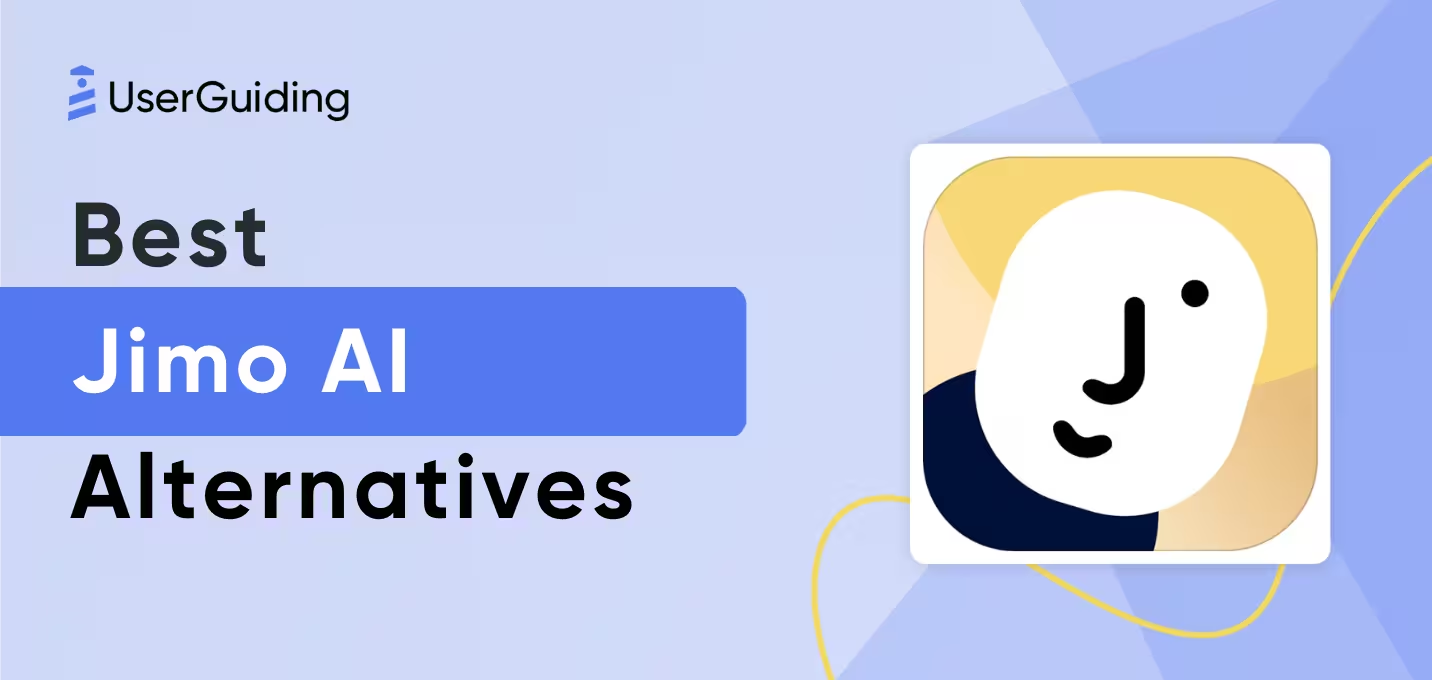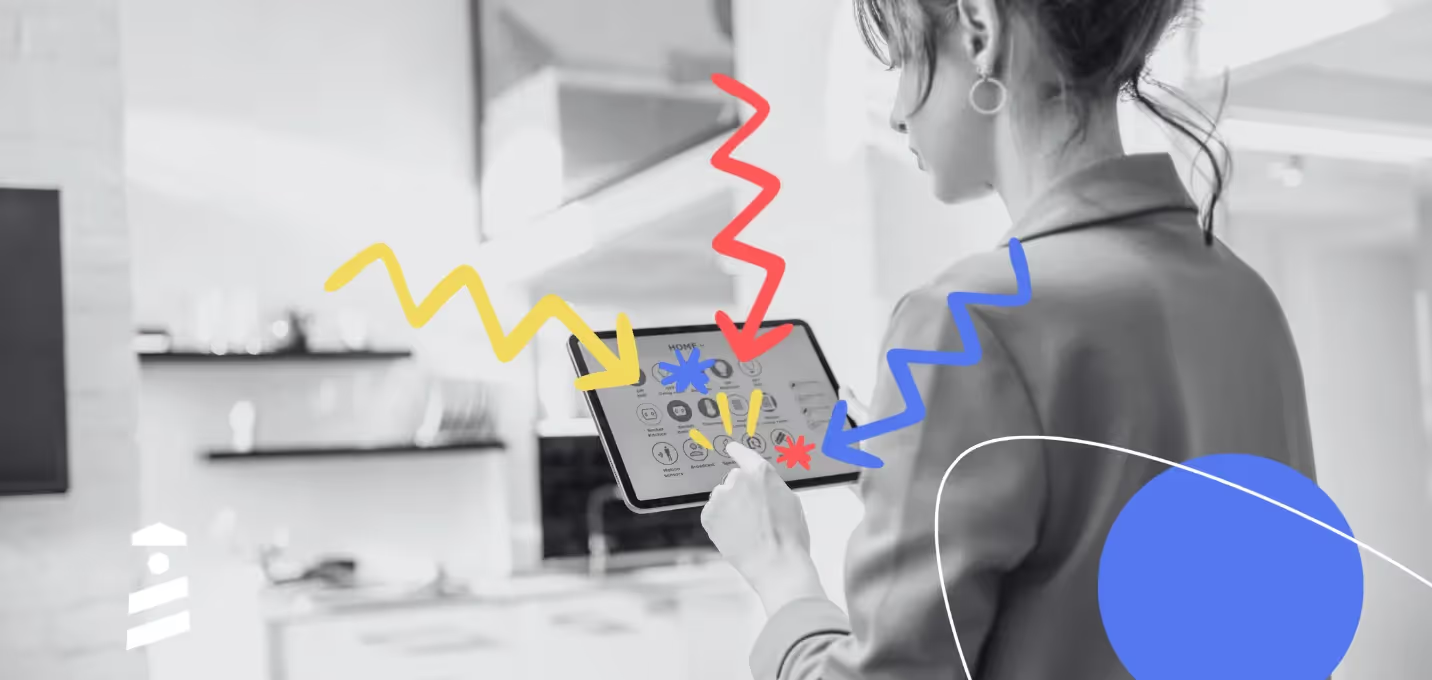

User onboarding has come a long way in the last few years.
What used to be a simple sign-up process is now a strategic, data-driven journey. And the numbers don’t lie—companies that prioritize onboarding see real results.
For instance, did you know that 63% of users consider onboarding a key factor in their decision to subscribe to a product?
Fast forward to 2025, and onboarding is more than just a welcome screen—it’s the foundation of user engagement.
A well-structured onboarding flow can mean the difference between a loyal customer and a lost opportunity.
In this report, we’re diving into 100+ user onboarding statistics to uncover the trends, challenges, and strategies shaping the best onboarding experiences today.
Let’s go!
TL;DR
- Speed matters—users decide fast. If they don’t see value quickly, they churn.
- Interactive and personalized onboarding boosts retention, engagement, and conversion rates.
- Automation + AI reduces friction, speeds up onboarding, and cuts support tickets.
- Gamification & progress indicators keep users motivated and drive completion.
- Live human interaction (Q&As, peer intros, onboarding buddies) significantly improves satisfaction.
- Clear CTAs, quick wins, and goal-setting increase activation and long-term retention.
- Localization & accessibility make onboarding smoother for diverse audiences.
- Onboarding isn’t one-and-done—ongoing education and engagement prevent churn.
"Onboarding isn’t a phase—it’s the entire first date. If you’re still talking about yourself after 10 minutes, there won’t be a second."
– Des Traynor (Intercom, 2024 Product Lessons)
1- 90% of users churn if they don’t understand a product’s value within the first week of signing up.
✍🏼 The first week is a make-or-break moment.
If users don’t quickly grasp how your product benefits them, they’re likely to move on.
That’s why clear messaging, guided onboarding, and early activation strategies are crucial.
Show value early, or risk losing them.
2- SaaS companies with video onboarding see 35% fewer support tickets in the first month.
✍🏼 A well-made video does more than explain—it demonstrates.
Instead of users digging through documentation or contacting support, a quick walkthrough answers their questions before they even ask.
Plus, videos make complex features feel more intuitive, reducing frustration and increasing adoption.
3- Users who don’t engage within the first 3 days have a 90% chance of churning.
✍🏼 The initial excitement of signing up fades quickly if users don’t take action.
The first 72 hours are critical for guiding them toward their “aha” moment.
Whether it’s a welcome email, an in-app prompt, or a quick-start guide, something needs to pull them in fast before they lose interest.
4- Mobile apps with one-click social login see 60% higher onboarding completion rates.
✍🏼 Every extra step in the signup process increases the risk of drop-off.
Asking users to create and remember yet another password is often enough to make them abandon the process entirely.
Social logins eliminate friction, making it easier for users to get started without second thoughts.
5- Users who watch an onboarding video are 2x more likely to convert to paid plans.
✍🏼 Video is powerful because it makes abstract value concrete.
Instead of users guessing how your product fits their needs, they get a clear, visual demonstration of its impact.
A good onboarding video answers key questions, addresses potential hesitations, and builds confidence—paving the way for conversion.
6- Companies using automated onboarding workflows reduce churn by 25%.
✍🏼 Personalization at scale is key to keeping users engaged.
Automated workflows—whether through email sequences, in-app guidance, or chatbots—ensure users get the right information at the right time.
It’s like having a dedicated guide leading them through the process, minimizing confusion and increasing long-term retention.
7- 78% of products now use progress indicators during onboarding.
✍🏼 People are more likely to complete a process when they know how far they’ve come.
Progress bars, checklists, and step indicators reduce drop-offs by making onboarding feel structured and achievable.
It’s a psychological boost—users don’t feel lost, and they’re motivated to finish.
8- Interactive product tours increase feature adoption by 42%.

✍🏼 Users don’t want to read about features—they want to experience them.
Interactive product tours allow them to engage with key functionalities firsthand, making learning feel effortless.
Instead of expecting users to figure things out on their own, guided interactions help them see value immediately, boosting adoption rates.
9- Users who receive timely tooltips have 30% higher retention.
✍🏼 No one likes feeling stuck.
Well-timed tooltips act as gentle nudges, offering just enough guidance without overwhelming the user.
When done right, they eliminate guesswork, making the product feel intuitive.

This keeps users engaged longer because they aren’t left struggling to navigate the experience.
10- Onboarding emails with clear CTAs get 3x more clicks.
✍🏼 A vague or cluttered email can easily be ignored, but a focused email with a single, compelling call to action drives results.
Whether it’s encouraging users to complete their profile, try a feature, or book a demo, a clear CTA removes hesitation.
The easier you make the next step, the more likely users are to take it.
11- Products with interactive onboarding flows see 50% higher activation rates than static tutorials.
✍🏼 Engagement leads to retention.
Instead of passively reading instructions, users get hands-on experience with key features right away.
Interactive onboarding makes learning feel effortless, guiding users toward activation without overwhelming them.
12- 92% of top SaaS apps now use in-app onboarding tours, up from 68% in 2020.
✍🏼 The shift toward in-app guidance isn’t just a trend—it’s a necessity.
With so many products competing for attention, users don’t have the patience to figure things out on their own.
A well-structured tour helps them see value immediately, reducing frustration and increasing adoption.
13- 74% of users prefer onboarding that adapts to their behavior (e.g., skipping known steps).
✍🏼 One-size-fits-all onboarding can be frustrating.
Users appreciate when a product recognizes what they already know and skips unnecessary steps.
Adaptive onboarding creates a smoother experience, making users feel in control rather than forced through a rigid process.
14- Apps with gamification (badges, progress bars) see 50% higher completion rates.
✍🏼 Motivation matters.
Gamification taps into people’s natural drive for progress and achievement.
A simple badge, milestone, or progress bar can turn onboarding into a rewarding experience rather than a chore—keeping users engaged until they reach key activation points.
"A progress bar tricks the brain into commitment. It's the digital version of 'We’re already 50% done!' at IKEA."
– Nir Eyal (Author, Hooked), 2024 Behavioral Design Summit
15- Products with empty states guidance see 28% less confusion.
A blank screen is a lost opportunity.
Instead of leaving users wondering what to do next, effective empty states provide helpful suggestions, examples, or prompts.
This small touch prevents drop-offs by keeping users on track from the very first interaction.
16- Contextual help buttons reduce support queries by 40%.
✍🏼 Users shouldn’t have to leave what they’re doing to find answers.
Contextual help—whether through tooltips, expandable FAQs, or in-app chat—provides immediate assistance right where it’s needed.
It’s a simple way to reduce frustration and cut down on unnecessary support tickets.
17- Multi-step onboarding has 22% higher completion when animated.
✍🏼 Motion catches attention.
Subtle animations make onboarding feel smoother and more engaging, guiding users through the process without overwhelming them.
When done right, animations help direct focus and create a more intuitive experience.
18- Personalized first-run experiences boost retention by 35%.
✍🏼 Users want to feel like a product was made for them.
Personalization—whether through tailored recommendations, custom onboarding flows, or dynamic content—helps users connect with the product faster.
When people see immediate relevance, they’re far more likely to stick around.
19- Apps explaining value before features keep 45% more users.
✍🏼 Features are important, but they don’t mean much without context.
Users need to understand why a product matters before diving into how it works.
Leading with value—like how it saves time, improves workflows, or solves a pain point—creates an emotional connection that keeps users engaged.
20- Onboarding with social proof converts 30% better.
✍🏼 Trust is a powerful motivator.
Seeing testimonials, case studies, or user success stories reassures new users that they’re making the right choice.
When people see others finding success with a product, they’re much more likely to stick with it themselves.
"Asking for a credit card before value delivery is like proposing on a first date—it reeks of desperation."
– Patrick Campbell (ProfitWell, 2024 Pricing Trends)
21- 72% of users abandon apps during onboarding if it requires too many steps.
✍🏼 The more friction, the faster users leave.
If onboarding feels like an obstacle course instead of a smooth introduction, people won’t stick around.
The best onboarding flows balance education with efficiency—keeping steps focused, meaningful, and skippable when possible.
22- Users who complete an onboarding checklist are 3x more likely to become paying customers.

✍🏼 A checklist gives users a clear path to success. Instead of feeling lost, they can track their progress and see small wins early on.
This structured approach boosts confidence, encourages engagement, and increases the likelihood of conversion.
23- Products with a "quick win" in onboarding retain 80% more users.
✍🏼 People need to feel immediate value.
Whether it’s setting up their first project, integrating a tool, or achieving a small success, a “quick win” builds momentum and reinforces why they should stick with your product.
24- B2B SaaS companies with a dedicated onboarding specialist see 70% faster time-to-value.
✍🏼 Onboarding is an investment.
Having a dedicated specialist ensures that new customers don’t have to navigate the process alone, leading to faster adoption, reduced frustration, and quicker ROI.
25- Customers who meet teams during onboarding renew 65% more.
✍🏼 Personal connections matter.
When users meet real people behind the product—whether through a kickoff call or a live chat—it builds trust and fosters long-term relationships.
A strong human connection can be the difference between a one-time user and a loyal customer.
26- Onboarding health scores predict 85% of churn risk.
✍🏼 Data doesn’t lie.
Tracking key onboarding metrics—like engagement levels, time-to-first-value, and feature adoption—helps companies identify at-risk users before they churn, allowing for proactive intervention.
27- Milestone celebrations increase progression by 40%.
✍🏼 Progress needs to be acknowledged.
Whether it’s a pop-up congratulating users on finishing setup or a badge for completing key steps, celebrating small wins keeps users motivated and engaged.
28- 68% of users prefer scheduled onboarding over self-service.
✍🏼 Not everyone wants to figure things out alone.
A structured, scheduled onboarding—like guided sessions or personalized walkthroughs—helps users feel supported and eliminates the guesswork.
29- Customized learning paths see 55% better adoption.
✍🏼 People learn differently.
Giving users options—whether it’s a beginner track, an advanced setup guide, or role-specific instructions—helps them absorb information in a way that makes the most sense for them.
30- Real-time feedback cuts onboarding time by 30%.
✍🏼 Instant feedback helps users course-correct without frustration.
Whether it’s a validation message or an AI-powered assistant, real-time responses reduce confusion and keep users moving forward smoothly.
31- B2B customers want ROI demonstrated in the first 14 days.
✍🏼 Businesses don’t have time to wait.
If your product doesn’t prove its value within two weeks, decision-makers start looking elsewhere.
Early wins and clear performance metrics can make or break retention.
32- Dedicated onboarding managers improve CSAT by 35 points.
✍🏼 A high-touch onboarding experience leads to happier customers.
Having a dedicated manager ensures new users get hands-on support, making them feel valued and increasing satisfaction levels.
33- Automated workflows reduce onboarding errors by 80%.
✍🏼 Manual processes lead to mistakes.
Automating key steps—like account setup, integrations, or feature recommendations—ensures consistency, minimizes human error, and creates a smoother experience.
34- Customers reference onboarding experience in 68% of renewal decisions.
✍🏼 First impressions last.
A clunky or confusing onboarding can make customers doubt their choice, while a seamless one sets the stage for long-term loyalty.
35- Real-time progress tracking increases completion by 50%.
✍🏼 People like knowing how far they’ve come.
A visual progress tracker keeps users engaged and gives them a sense of accomplishment as they move through onboarding.
36- B2B customers expect onboarding SLAs - 73% want guaranteed timelines.
✍🏼 In enterprise settings, vague timelines don’t cut it.
Businesses expect structured onboarding with clear milestones, deadlines, and accountability to ensure smooth adoption.
37- Interactive sandbox environments reduce time-to-first-value by 60%.
✍🏼 Hands-on experience is the fastest teacher.
Giving users a safe, interactive space to explore your product—without fear of breaking something—accelerates learning and adoption.
38- Users rate transparency as the #1 onboarding priority (82%).
✍🏼 No one likes surprises.
Clearly setting expectations about the process, timeline, and next steps builds trust and prevents frustration.
39- Customers who set up notification preferences during onboarding have 45% lower opt-out rates.
✍🏼 Letting users control how they receive updates makes them more likely to stay engaged.
A simple notification settings step during onboarding prevents future frustration and unsubscribes.
40- B2B companies with onboarding dashboards achieve 90% faster stakeholder alignment.
✍🏼 A single source of truth speeds up decision-making.
Dashboards help teams track progress, see key metrics, and ensure everyone is aligned on onboarding goals.
41- Personalized onboarding increases user retention by 40% vs. generic flows.
✍🏼 One-size-fits-all onboarding doesn’t work.
Tailoring the experience—based on user role, industry, or past behavior—makes onboarding feel more relevant, leading to stronger engagement and retention.
42- AI-powered chatbots in onboarding reduce drop-offs by 28%.
✍🏼 Chatbots provide instant support, guiding users through onboarding without making them wait for human assistance.
The result?
Fewer abandoned setups and smoother experiences.
43- Personalized welcome emails increase Day 7 retention by 33%.
✍🏼 A generic “Welcome to [Product]!” email won’t cut it.
Personalization—whether it’s addressing users by name, referencing their goals, or suggesting first steps—keeps them engaged beyond the initial sign-up.
44- 83% of B2B buyers say slow onboarding is a dealbreaker.
✍🏼 In B2B, time is money.
If onboarding drags on, businesses lose patience and move on.
A well-structured, efficient process can be the difference between a long-term customer and a lost deal.
45- Biometric verification increases completion by 25%.
✍🏼 Security can be a bottleneck, but simplifying it helps.
Face or fingerprint authentication speeds up verification while making it feel more seamless and secure.
46- Document pre-fill raises submission rates by 60%.
✍🏼 Nobody likes filling out endless forms.
Auto-filling known details removes friction, making it easier for users to complete onboarding steps without frustration.
47- 3D product demos improve understanding by 45%.
✍🏼 Seeing is believing.
Interactive 3D demos allow users to explore a product in a hands-on way, making complex concepts easier to grasp.
48- Compliance-focused onboarding has 50% less fallout.
✍🏼 In industries with heavy regulations, compliance isn’t optional.
Making compliance steps clear, streamlined, and easy to follow prevents users from dropping out of the process.
49- Mobile-optimized flows see 2x more completions.
✍🏼 If onboarding isn’t smooth on mobile, users won’t stick around.
Ensuring a seamless experience across devices—whether through responsive design or mobile-first steps—drastically improves completion rates.
50- QR code logins reduce setup time by 70%.
✍🏼 Manually entering credentials is outdated.
A simple QR scan speeds up authentication and gets users into the product faster with minimal effort.
51- Virtual onboarding fails for 23% of users if it’s not interactive.
✍🏼 Passive onboarding—like long PDFs or static slides—just doesn’t work.
Users need interactive elements, such as guided walkthroughs or quizzes, to stay engaged and actually retain information.

Check out our e-book for more insights!
52- Video-based onboarding improves knowledge retention by 35% vs. text.
✍🏼 People remember what they see and hear better than what they just read.
A well-structured onboarding video can simplify complex concepts and help users grasp key features faster.
53- Live Q&A sessions increase completion by 28%.
✍🏼 Onboarding isn’t just about delivering information—it’s about answering questions in real time.
Giving users a chance to clarify doubts through live Q&A keeps them moving forward instead of getting stuck.
54- Microlearning modules boost knowledge by 40%.
✍🏼 Short, digestible lessons work better than long, overwhelming tutorials.
Breaking onboarding into bite-sized steps makes it easier for users to absorb and apply what they learn.
55- Community features increase engagement 3x.
✍🏼 People stick around when they feel part of something.
Community-driven onboarding—forums, peer discussions, or mentorship programs—helps users connect, share insights, and stay engaged with the product.
56- Progress bars increase completion rates by 22%.
✍🏼 Uncertainty kills motivation.
A visible progress bar reassures users that they’re moving forward, reducing the chance of them abandoning onboarding halfway.
57- Personalized onboarding increases early productivity by 52%.
✍🏼 When onboarding speaks directly to a user’s needs—showing relevant features instead of generic ones—they can start using the product effectively much faster.
58- 83% of remote users feel disconnected without proper virtual onboarding.
✍🏼 Remote users don’t get the benefit of in-person guidance, so a structured virtual onboarding experience is crucial.
Without it, they’re left feeling lost and disengaged.
59- Onboarding checklists improve task completion by 67%.

You can find out more from our e-book any time!
✍🏼 A clear checklist helps users track their progress and stay on course.
When people know exactly what steps to take, they’re much more likely to finish the process.
60- Only 12% of users rate their onboarding as ‘’effective’’.
✍🏼 That’s a serious gap!
Most onboarding experiences still leave users confused or frustrated. Companies that refine their onboarding can immediately stand out.
61- Structured onboarding increases retention by 50%.
✍🏼 A well-designed onboarding experience helps users see value early.
Without structure, users struggle to get started, leading to higher churn rates.
62- Users receiving 'just-in-time' onboarding tips exhibit 33% fewer errors.
✍🏼 Information overload is real.
Instead of overwhelming users upfront, delivering the right tip at the right moment helps them learn more efficiently and make fewer mistakes.
63- Personalized onboarding playlists increase completion by 41%.
✍🏼 People engage more when they can learn at their own pace.
A personalized onboarding playlist—curated based on user roles, goals, or experience level—keeps them interested and moving forward.
64- AI-driven onboarding reduces time-to-productivity by 40%.
✍🏼 AI personalizes the onboarding journey, delivering relevant content at the right time.
By removing friction and automating repetitive steps, users can get up to speed much faster.
65- 70% of organizations will use gamification in onboarding by 2025.
✍🏼 Gamification—badges, leaderboards, and rewards—keeps users engaged and motivated.
As companies recognize its effectiveness, it’s quickly becoming a standard practice.
66- Personalized onboarding paths increase completion rates by 35%.
✍🏼 Users don’t want to wade through irrelevant steps.
Customizing the journey based on their role, experience, and goals makes onboarding feel more intuitive and efficient.
67- AI chatbots answer 75% of onboarding questions instantly.
✍🏼 Waiting for support can kill momentum.
AI chatbots provide immediate answers, helping users stay on track without frustration.
68- Microlearning modules increase onboarding completion by 45%.
✍🏼 Short, focused learning sessions are easier to digest than long, drawn-out tutorials.
Breaking onboarding into bite-sized lessons keeps users engaged and progressing.
69- Predictive analytics can reduce onboarding time by 30%.
✍🏼 AI can anticipate where users might struggle and proactively guide them.
This removes unnecessary steps, making onboarding faster and more efficient.
70- Mobile-optimized onboarding sees 2x higher completion rates.
✍🏼 Users expect a seamless experience across devices.
If onboarding isn’t mobile-friendly, they’re far more likely to drop off.
71- Conversational AI reduces onboarding support tickets by 65%.
✍🏼 A well-trained AI assistant can handle most common onboarding queries, freeing up human support teams to focus on complex issues.
72- Augmented Reality (AR) demonstrations improve product understanding by 70%.
✍🏼 Seeing a product in action—through AR—makes learning more intuitive.
It’s especially powerful for complex tools and physical products.
73- Neural language processing personalizes content with 91% accuracy.
✍🏼 AI can fine-tune onboarding messages, making them more relevant to each user.
The more personalized the experience, the higher the engagement.
74- Voice-guided onboarding improves accessibility compliance.
✍🏼 Not everyone prefers (or can use) text-based instructions.
Voice-guided onboarding ensures inclusivity, making the experience accessible to more users.
75- Interactive quizzes improve onboarding recall by 40%.
✍🏼 Passive learning isn’t enough—users need to engage with the material.
Quizzes reinforce key concepts, helping users retain information and apply it more effectively.
76- Video introductions from leadership boost cultural alignment by 55%.
✍🏼 A personal message from leadership makes new users feel welcomed and connected to the company’s vision.
When people see the bigger picture, they’re more likely to engage.
77- Gamified onboarding increases early participation by 70%.
✍🏼 Competition, rewards, and challenges make onboarding more fun and engaging.
When users feel like they’re making progress, they’re more likely to complete the journey.
78- Onboarding surveys improve processes by 60%.

Find out more from our e-book now! It’s super easy to download.🚀
✍🏼 You can’t improve what you don’t measure.
Collecting feedback during onboarding helps identify pain points and refine the experience for future users.
79- First-week check-ins reduce early churn by 28%.
✍🏼 A quick follow-up shows users they’re supported.
Addressing concerns early prevents frustration and keeps them engaged with the product.
80- Mobile access to materials increases engagement 35%.
✍🏼 People want flexibility.
When onboarding materials are available on mobile, users can engage with them anytime, anywhere—leading to better completion rates.
81- 62% of new users form their opinion about a product within the first 3 interactions.
✍🏼 Three strikes and you're out!
If your onboarding isn’t hitting home fast, users will bounce before you can say “activation.”
82- Users who rate onboarding positively are 4x more likely to become power users.
✍🏼 A killer first experience doesn’t just keep users—it turns them into your product’s biggest fans.
Roll out the red carpet, not a scavenger hunt.
83- Hybrid (digital + human) onboarding achieves 73% satisfaction vs. 41% for digital-only.
✍🏼 Turns out, people still like people.
A mix of automation and human touch keeps users from feeling like they’re talking to a toaster.
84- 78% of users want at least one live interaction during onboarding.
✍🏼 A single human moment can make all the difference.
Even a 5-minute check-in beats throwing users into the deep end with a “good luck!”
85- Chatbot-only onboarding has 3x higher abandonment rates.
✍🏼 Bots are great, but if users feel like they’re stuck in an endless loop of “I didn’t get that,” they’ll ghost faster than a bad Tinder date.
86- Tailored onboarding paths increase Day 30 retention by 52%.
✍🏼 No one wants to be force-fed irrelevant info.
Let users skip the basics if they’re already pros and focus on what actually matters to them.
87- Users who set personal goals during onboarding engage 65% more.
✍🏼 Give them a mission, and they’ll stick around to complete it.
Nobody wants to be a passive passenger—they want to drive.
88- Dynamic content (adapting to user behavior) reduces time-to-competency by 40%.
✍🏼 It’s like a GPS for onboarding—smart enough to reroute when users take a different turn instead of making them start over.
89- Mobile-responsive onboarding sees 2.8x higher completion rates.
✍🏼 If users have to pinch and zoom their way through, they’ll peace out before step two.
90- Push notifications during onboarding boost re-engagement by 47%.
✍🏼 A little nudge here and there keeps users from wandering off.
Just don’t overdo it—nobody likes a clingy app.
91- Badge systems increase feature exploration by 63%.
✍🏼 Give people digital gold stars, and suddenly they’re clicking everything just to see what happens.
92- Progress bars alone improve completion rates by 22%.
✍🏼 Progress bars work because nobody likes being stuck at 80%—it’s the psychological equivalent of leaving one sock unfolded.
93- 43% of churn stems from unclear 'next steps' during onboarding.
✍🏼 If users are left thinking “Now what?”, you’ve already lost them.
Handholding isn’t a bad thing if it means they actually stick around.
94- Slow-loading tutorial videos increase drop-offs by 300%.
✍🏼 If your video doesn’t load instantly, users will assume the entire product is just as sluggish.
Ain’t nobody got time for buffering.
95- AI-driven nudges reduce inactive users by 38%.
✍🏼 The right message at the right time is like a friend reminding you to drink water—it keeps users from drying up and disappearing.
96- Localized onboarding increases emerging market adoption by 70%.
✍🏼 A one-size-fits-all approach doesn’t fly.
If you wouldn’t serve sushi with ketchup, don’t force generic onboarding on global users.
97- Non-English users complete onboarding 25% faster with cultural adaptations.
✍🏼 A little localization goes a long way—because nobody should have to decode awkward translations while learning a new tool.
98- Monthly 'refresher' modules reduce support tickets by 45%.
✍🏼 Users forget stuff.
A little “Hey, remember this cool thing?” can save your support team from drowning in basic questions.
99- Users receiving advanced training at 90 days renew at 2.5x the rate.
✍🏼 Just because they signed up doesn’t mean they’re locked in.
Keep teaching them cool stuff, and they’ll keep coming back.
100- Social proof ('3 peers use this') increases conversions by 33%.
✍🏼 Nobody wants to be the only one at the party.
Show them others are already vibing, and they’ll be more likely to join.
101- Loss aversion messaging ('Don’t miss out') works 28% better than rewards.
✍🏼 Turns out, people are more scared of missing out than they are excited about gaining something.
FOMO beats free stuff every time.
102- Top-performing companies onboard users 60% faster than laggards.
✍🏼 Speed matters.
If your onboarding takes longer than a Netflix episode, users will start looking for the skip button—or a faster competitor.
103- Onboarding innovation leaders see 4.1x higher NPS scores.
✍🏼 Investing in onboarding isn’t just a nice-to-have—it’s the difference between customers raving about you and them ghosting you.
104- 62% of users feel disengaged if digital onboarding lacks human interaction.
✍🏼 No one wants to feel like they’re talking to a wall.
Even the best automation can’t replace a well-timed human touch.
105- Only 12% of users rate their onboarding experience as "effective".
✍🏼 That’s a brutal stat. If onboarding were a school subject, most companies would be flunking.
106- Users who set goals during onboarding retain 50% longer.
✍🏼 Give users a mission, and they’ll stick around to complete it.
It’s why people can’t resist to-do lists, even if they add things just to check them off.
107- Peer introductions increase platform activity by 35%.
✍🏼 People stay where their people are.
A warm intro from a teammate or fellow user makes an unfamiliar platform feel a lot less lonely.
108- Onboarding buddy systems reduce confusion by 60%.
✍🏼 A built-in guide (aka a “buddy”) beats aimless wandering any day.
If kindergarteners get one on their first day, why shouldn’t your users?
Conclusion
Onboarding isn’t just about teaching users—it’s about making them feel at home. A smooth, engaging process can turn skeptics into loyal users.
The best onboarding feels effortless, like an invitation rather than a tutorial.
Small tweaks—personalization, clarity, a touch of fun—can make all the difference. Because in the end, users remember how your product made them feel.
Frequently Asked Questions
What is the main purpose of onboarding?
To quickly demonstrate product value and guide users to their "Aha!" moment, reducing early churn while increasing engagement and retention.
What are the statistics of onboarding?
Key stats show 90% of users churn without clear value in the first week, while personalized onboarding boosts retention by 40%, and interactive tours increase activation by 50%.
What are the metrics for onboarding?
Track time-to-value, completion rates, feature adoption, and Day 30 retention—top performers see 2x faster onboarding and 85% lower churn risk.
What is the value of onboarding?
Strong onboarding drives 3x more conversions, 65% higher renewals, and 35% fewer support tickets, directly impacting revenue and customer lifetime value.

















.svg)
.svg)
.svg)
.svg)
.svg)

.svg)
.svg)












.svg)
.svg)




.png)
















